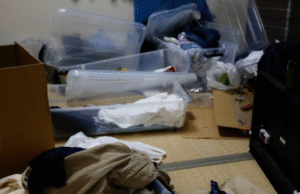Bullying never really stopped in the playground or classroom. The children who once mocked, shoved, and humiliated their peers without ever changing their ways simply grew taller, put on suits, secured jobs, and carried those habits into adulthood. Becoming adult bullies.
What is bullying?
Bullying is not limited to just a push in the playground or harsh words behind classroom walls. It is a repeated, deliberate pattern of verbal, physical, social or psychological aggression, designed to wound, control, or instil fear. At its root lies the hunger for power, the desire to dominate, and the absence of empathy.
And in adulthood, it wears many faces:
- The Conceited Bully
At a staff meeting, Mr. Femi sits at the head of the table while his assistant points out an error in the report. Instead of correcting it, Mr. Femi smirks and replies condescendingly: …“See? This is why I never trust you with big projects.” Laughter ripples through the room. His assistant has a flustered look on his face. Mr Femi leans back, satisfied, power has been restored. The conceited bully thrives on ego, control, and humiliation, showing little or no mercy for others. - The Imprudent Bully
At a family dinner, Chioma accidentally spills a drink. Her older brother explodes instantly: shouting, slamming his fist on the table, calling her “useless” in front of everyone. No pause, no breath or restraint, just pure rage unleashed like a lightning bolt. The imprudent bully lashes out at their victims with no emotional control or intelligence; they are governed by temper. - The Somatic Bully
A tenant asks her landlord politely for repairs. He leans in and says quietly, “Careful how you speak to me. I know people. It’d be a shame if something happened to your car.” She drives home that night with trembling hands, double-checking the locks. While the somatic bully may not use physical abuse, he or she may threaten to hurt victims and destroy their belongings or property. The weapon of choice is threats, not fists.
- The Verbal Bully
During lunch, colleagues joke around, but one person always turns the humour into sarcasm that cuts deep: “Wow, you’re still single? No wonder… look at you.” Everyone laughs. She smiles weakly, but later, she sits in her car, fighting tears. Words are sharper than blades and echo louder than laughter. Words are powerful and have a very strong effect on people. Verbal bullying could cause victims to lose interest in their lives in general and may even lead to depression. - The Ancillary Bully
The boss humiliates one worker daily. The others join in with nervous laughter, even adding little digs themselves. They know it’s cruel, and he looks broken. But if they don’t, the spotlight might swing their way. Silence becomes their shield and their weapon. These bullies avert attention from themselves by helping bully others. Secondary bullies may feel guilty about their deeds, but will let it go in view of saving themselves.
Workplace Bullying
The office can turn into a battlefield masked by fluorescent lights.
- A boss’s words cut daily, eroding your self-worth.
- You’re consistently picked on, mocked, or sidelined.
- Promotions pass you deliberately.
- Lies circulate unchecked, and no one steps up to defend you.
A woman shared how every morning she sat in her car, staring at the office door, rehearsing how to “act normal” just to survive the day. A career she once loved became a cage.
—
Customer Bullying
The saying, “the customer is always right,” but what happens when “right” turns into “ruthless”?
A restaurant owner recalls:
“A diner threw the food back at the waiter because it wasn’t ‘hot enough.’ The food hit my arm. Insults followed. And the worst part? The owner still apologised. Because he was afraid of losing business.”
Behind every forced smile in customer service, there’s often a bruise you can’t see.
Cyber Bullying
The internet is both a playground and a war zone.
Jane posts a selfie. Within minutes, comments pile in: “Ugly,” “You look horrible,” “Do us a favour and disappear.” She deletes the photo, but the words stay. They replay in her head at night, louder than her thoughts.
Trolls fish for pain, and too often, they catch it.
Bullying in Relationships & Families
Sometimes the bully sits at your dinner table.
A wife wants to visit her family for the weekend. Her husband sulks, refuses to eat, and slams the door. By the third day, she cancels her trip just to “keep the peace.” He smiles, restored. She wonders when compromise turned into captivity.
Financial Bullying
Control can also come through money.
“He will make me show receipts for every purchase. Even toothpaste. If I bought something he didn’t approve of, he would threaten to cut off the joint account. I started hiding cash in my shoe, just so I could breathe.”
Here, money isn’t currency. It’s chains.
—
Food for Thought
The truth is: anyone can be a victim or a perpetrator.
Bullying is not always loud, obvious, or violent. Sometimes, it is in a sigh, a smirk or silence.
If we look back honestly, most of us have bullied someone deliberately or unknowingly.
This piece is simply a mirror. A chance to ask:
– Is it happening to me?
– Am I the one doing it to others?
Next week, we’ll explore the effects of adult bullying, how these scars linger, and shape the lives we live.




